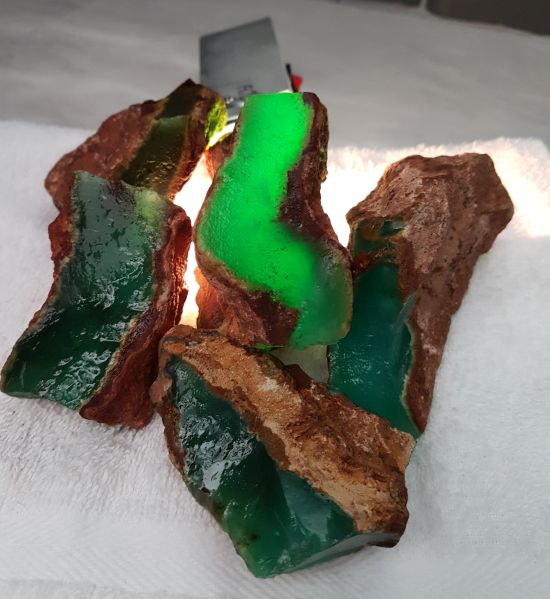 |
| Chrysoprase Rough Stone from Australia |
Quartz is one of the most ubiquitous minerals in the world. Quartz occurs in many forms, but the species is can usefully be divided into two families: the macrocrystallineand the microcrystalline.
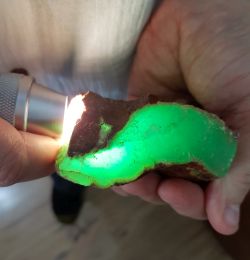 |
| Chrysoprase Translucency |
Macrocrystalline quartz has larger crystals that can be detected by the naked eye, while microcrystalline varieties are formed from aggregates of tiny crystals that can only be seen under the microscope.
Macrocrystalline quartz varieties tend to be transparent with a vitreous luster, and include amethyst, ametrine, citrine, rose quartz and rock crystal. The microcrystalline varieties tend to be opaque with a waxy luster, and includes gems like chalcedony, agate, onyx, carnelian, bloodstone and chrysoprase.
Chrysoprase is probably the least known member of the microcrystalline group, but it is generally considered to be the rarest and most valuable. It ranges in color from a soft to vivid apple-green, and especially fine specimens have considerable translucency. It is usually cut as cabochons and makes attractive rings and pendants. It can be found in larger sizes as well.
Like the other microcrystalline quartzes, chrysoprase has a hardness of 6.5-7 on the Mohs scale, a density of 2.58 to 2.64, and refractive index of 1.530 to 1.540.
Natural quartz is colorless and colored specimens get their color from trace elements. Chrysoprase is colored green by nickel and is one of very few gemstones colored by this element (the other is gaspeite). Green gems are typically colored by iron (peridot), chromium (emerald, chrome tourmaline, chrome diopside) or vanadium (tsavorite garnet).
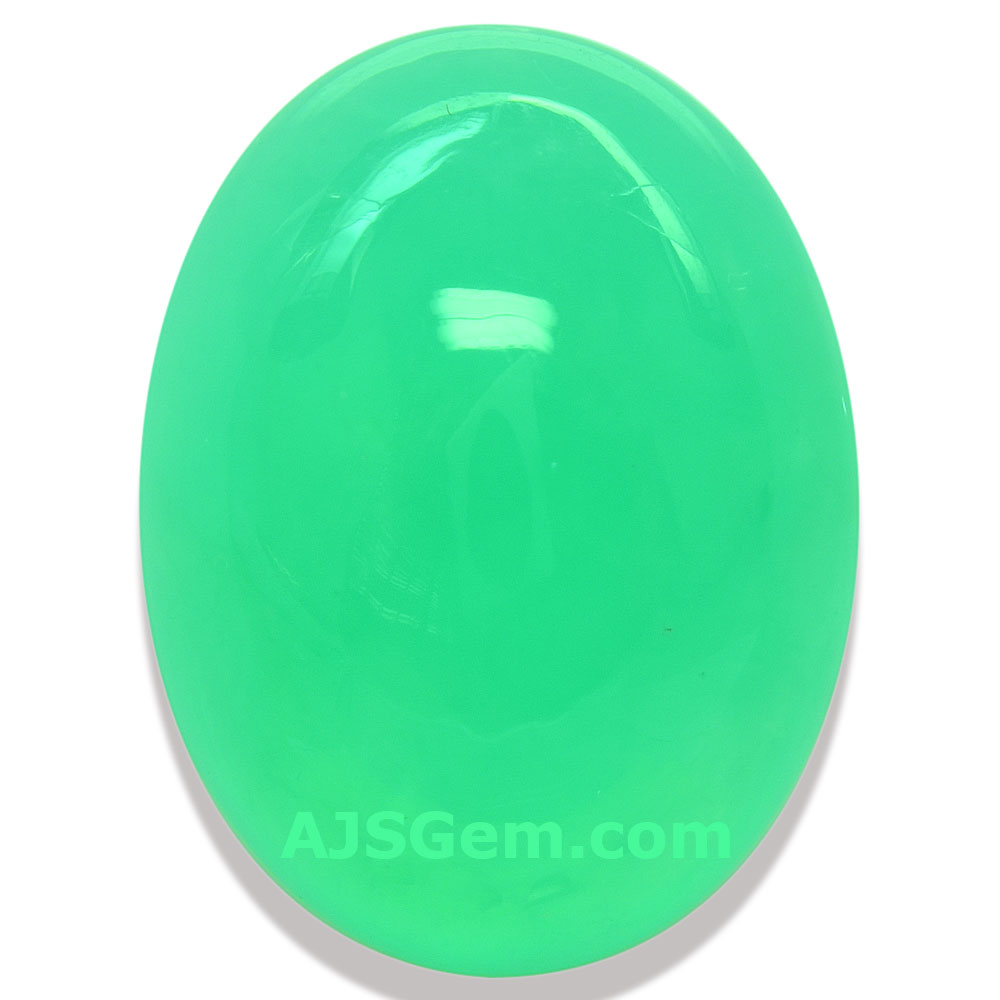 |
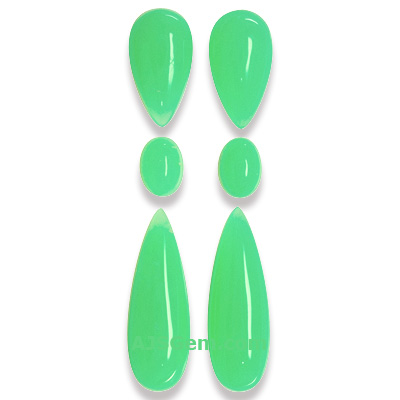 |
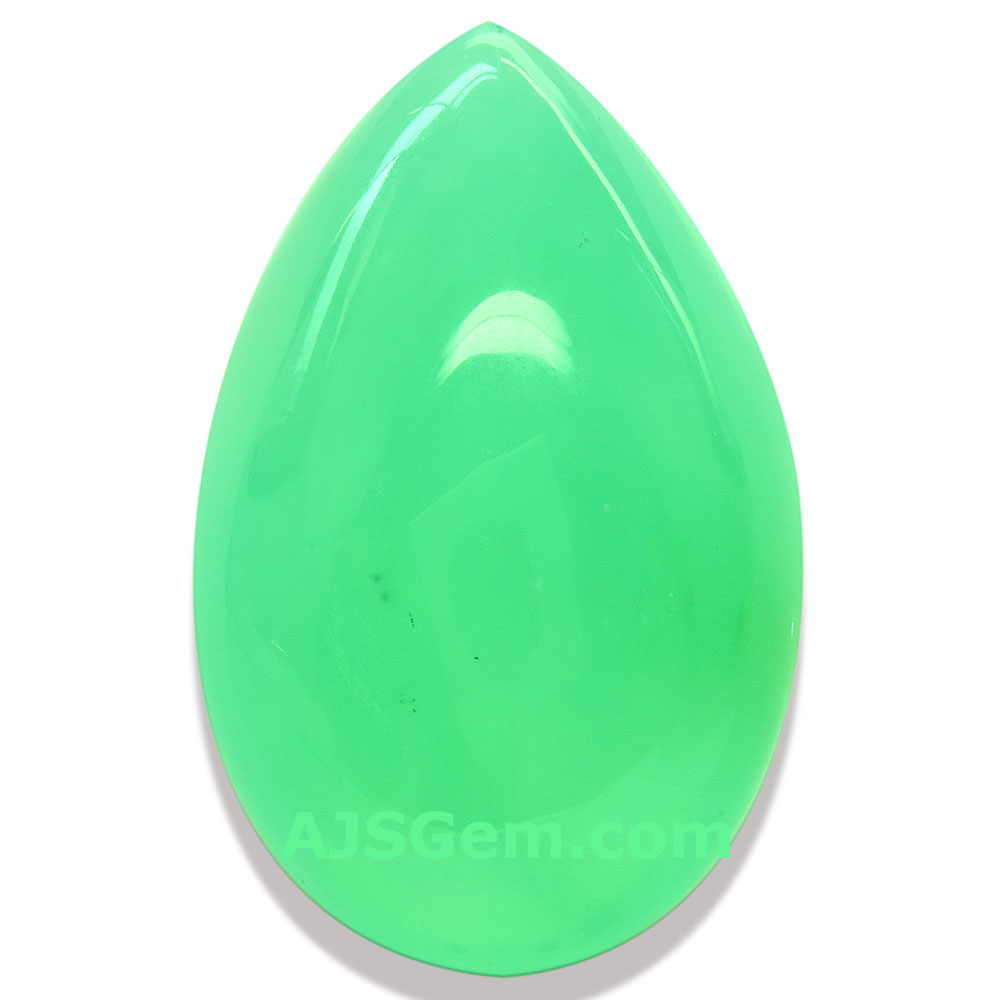 |
Chrysoprase tends to occur in weathered materials from nickel deposits. The most famous historical chrysoprase deposits were in Poland. Chrysoprase is now found in a number of locations, including Australia, Brazil, Madagascar and Tanzania. The chrysoprase from Central Queensland in Australia is particularly fine and some specimens display the prized translucency that give the impression of high quality jade. Australia now produces about 85% of the world's supply of chrysoprase.

